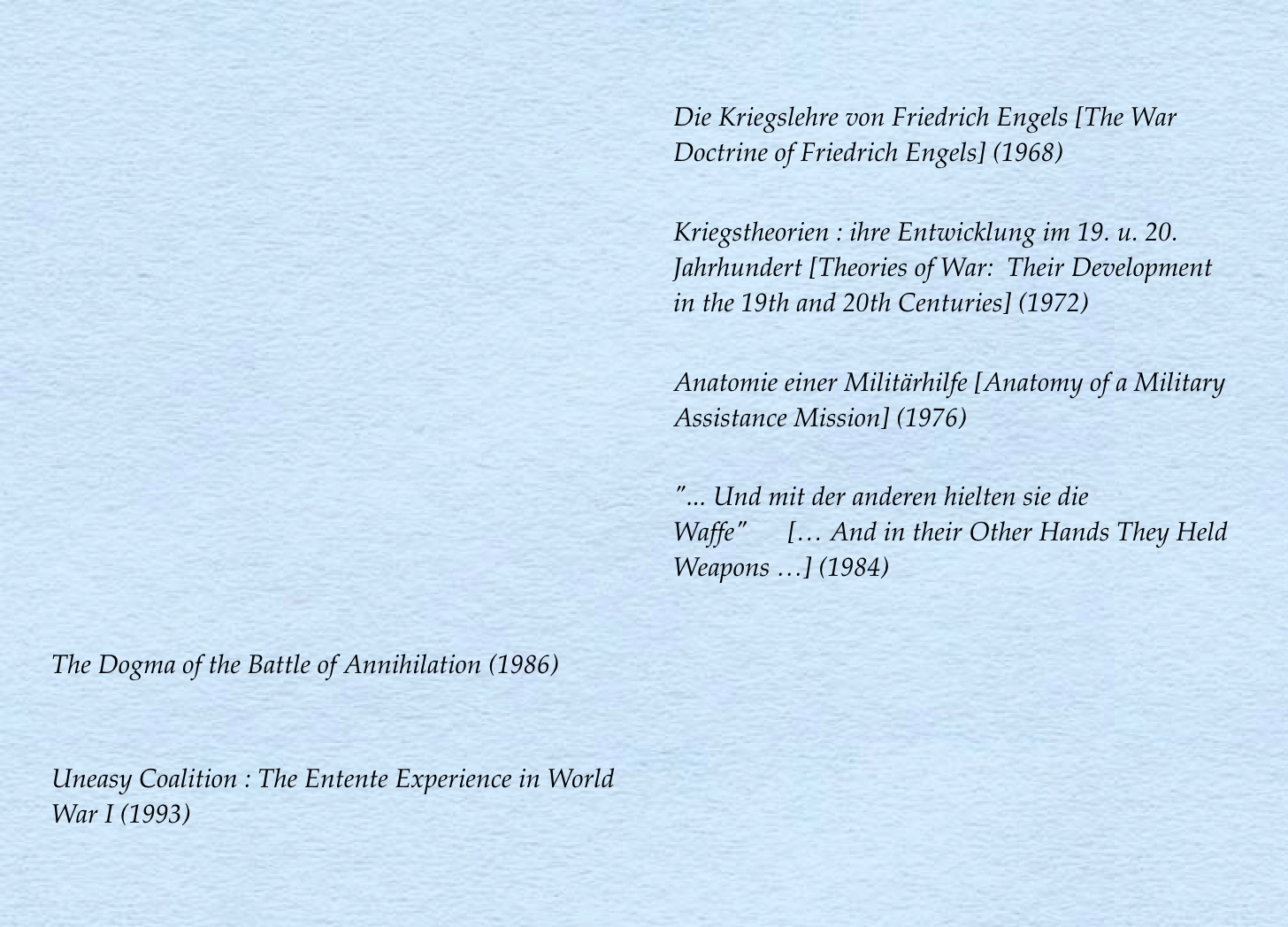Wallach on Clausewitz
The Dogma of the Battle of Annihilation (Part I)
Spring has come to Quantico, and with it my custom of spending the lunch hour al fresco, at a bird-bespeckled picnic table by the banks of the broad Potomac, reading in an old-fashioned way. Recently, I took advantage of the sunshine to revisit one of my all-time favorite books, The Dogma of the Battle of Annihilation.1
In writing The Dogma of the Battle of Annihilation, Jehuda Lothar Wallach pursued a pair of parallel purposes. On one level, he fulfilled the promise made in its subtitle: The Theories of Clausewitz and Schlieffen and their Impact on the German Conduct of Two World Wars. On another, Professor Wallach told a cautionary tale. In particular, warned his comrades in the Israeli Defense Forces, many of whom had borrowed heavily from the German tradition of maneuver warfare, of the strategic follies that so often keep company with tactical excellence.2
Wallach begins The Dogma of the Battle of Annihilation with a chapter that provides a series short, but highly nuanced, descriptions of the ideas of Carl von Clausewitz. (These ideas include the importance of moral forces, the effect of friction, the value of concentric maneuvers, the need to concentrate forces, the concept of the center of gravity, the complex relationship between attack and defense, and, finally, what Wallach calls the “triple tendency” of violence, chance, and politics.)3
In keeping with the central theme of the book, Wallach employs these descriptions to contrast the tactical application of each concept with the (often very different) role that the idea plays in strategy. Some of the précis, moreover, make it clear that Clausewitz often preferred the fresh engagement of paradoxes to the achievement of the “foolish consistency” that Ralph Waldo Emerson called “the hobgoblin of little minds.” In other words, in contrast to those who treat On War as a kind of sacred scripture, Wallach realizes that Clausewitz was an extraordinarily thoughtful man working hard to make sense of his considerable experience of war.
For Further Reading:
To Share, Subscribe, or Support:
Wallach finished the first version of the book, a doctoral thesis that bore the title of Clausewitz and Schlieffen : a Study of the Impact of their Theories on the German Conduct of the 1914-1918 and 1939-1945 Wars, in 1965. Two years later, Bernhard und Graefe Verlag published a translation, by Hans Jürgen Baron von Koskull, into German. (This bore the title of Das Dogma der Vernichtungsschlacht: Die Lehren von Clausewitz und Schlieffen und ihre Wirkungen in zwei Weltkriegen.] In 1986, and thus nearly twenty years after the completion of the original thesis, Greenwood Press published the third, and final, version of the work: The Dogma of the Battle of Annihilation: The Theories of Clausewitz and Schlieffen and their Impact on the German Conduct of Two World Wars.
Aryeh J.S. Nusbacher Sweet Irony: The Israeli Application of German Manoeuvre Warfare Doctrine on the Golan Heights, 1973 (Royal Military College of Canada: Masters Thesis, 1996), Chapter II
The use of “triple tendency” in place of the expression used by Clausewitz (“wondrous trinity”) strikes me as odd. Likewise, it find it interesting that the Baron von Koskull, who translated the book into German, rendered “triple tendency” as “a three-part combined tendency” [dreifach zusammengesetzten Tendenz].








Another book for my slim chance wish list. £135 on Amazon. Will keep searching.
At TBS, I was introduced to a phrase I've strived to follow ever since: "Doctrinally sound, not doctrinally bound." All too often, the concepts, doctrine, methods, etc. really do just become dogma. And when that happens....well, dumb things happen